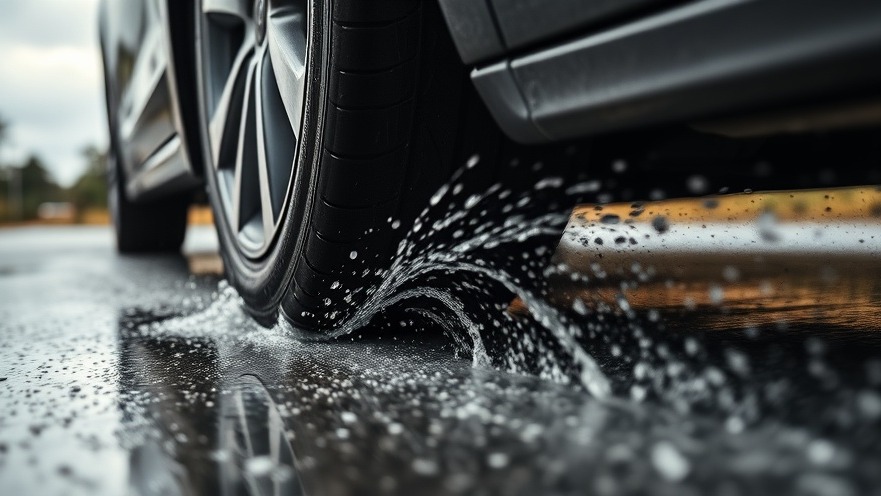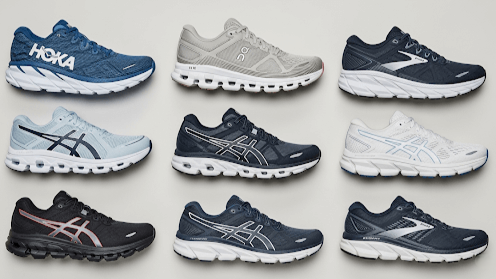
Understanding Hydroplaning: The Basics You Should Know
Hydroplaning occurs when a vehicle’s tires lose contact with the road surface, often due to a layer of water. The result is a frightening lack of control similar to driving on ice. This phenomenon is particularly dangerous in wet conditions, where stopping distances can greatly increase, and steering becomes a challenge. While it’s more common in heavy rain, hydroplaning can also occur in conditions with mud or snow where debris becomes trapped in the tire tread.
Why Hydroplaning Poses a Significant Threat
Hydroplaning is a significant threat to drivers because it changes the way tires interact with the road. When water accumulates beneath the tires, the normal friction diminishes, leading to unpredictable vehicle behavior. As defensive driving expert Robert Dillman explains, when motorists lose steering control, the impulse to overcorrect can spiral into dangerous maneuvers that lead to collisions. Each year's rainy season highlights the necessity for awareness of these risks.
Top Causes of Hydroplaning You Should Know
Several factors contribute to hydroplaning, many of which are preventable. Key causes include:
Water Accumulation: The primary cause is water pooling on the road surface, especially when it rises above the tread of the tires. This can lead to tires losing their grip entirely.
Road Oil and Grime: Roads often collect oil and other automotive fluids during dry spells. The first few minutes of rain can turn these into a slick layer on the surface, increasing the risk of hydroplaning.
Weather Conditions: Poor visibility combined with heavy rain and high speeds sets the stage for disaster. Slowing down in bad weather decreases the likelihood of hydroplaning.
Tire Condition: Worn or under-inflated tires cannot channel water effectively, increasing susceptibility to losing traction.
Road Surface Quality: Smooth and poorly designed roadways may not drain water properly, leading to increased hydroplaning incidents.
Why Speed Matters in Wet Conditions
Excess speed is an obvious but critical factor in hydroplaning. When tires travel too quickly over wet surfaces, they operate below their capacity to displace water, creating a film that reduces contact with the ground. As a driver, being aware of your speed and adjusting it according to weather conditions is essential for safety.
Tips to Avoid Hydroplaning
Knowing how to prevent hydroplaning is one of the best strategies drivers can adopt. Here are several practical insights to maintain control in adverse conditions:
Maintain Proper Tire Pressure: Ensure your tires are always inflated to the manufacturer's recommended pressure. Regularly check for wear and replace tires as necessary.
Reduce Speed: Slow down during rain or wet conditions, especially before entering turns or curves.
Avoid Sudden Maneuvers: Make gradual turns and avoid quick braking, which can exacerbate loss of traction.
Stay Informed: Before you head out, check the weather. If heavy rain is expected, consider rescheduling your journey.
Explore Expert Perspectives on Hydroplaning
Experts in defensive driving emphasize the importance of educating oneself about road conditions. Keeping an eye on the weather and understanding how quickly those conditions can change is vital. Kye Grisham, a Vice President of a safety training program, points out that awareness and preparation are key to preventing incidents on wet roads.
Hydroplaning: A Reality Check for Homeowners
Homeowners taking care of yard work and home repairs should also be mindful of hydroplaning when traveling to hardware stores or during home improvement errands. Repairs may require visits to contractors or home supply stores, and understanding the risks of hydroplaning on wet roads is essential to ensuring both your safety and the safety of others on the road.
Take Action: Drive Safely to Your Destination
As you undertake your responsibilities, whether completing yard work or managing home improvements, remember the threat hydroplaning poses. Make a habit of consistent vehicle checks, adjusting your driving habits according to weather conditions, and educating your family about road safety. Staying aware not only ensures your safety but also the safety of everyone on the road.
 Add Row
Add Row  Add
Add 




Write A Comment